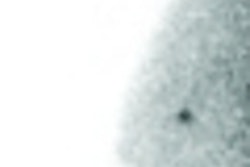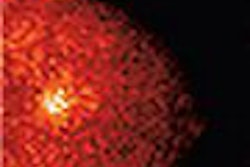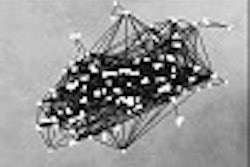NEW ORLEANS - Data from the International Breast MRI Consortium (IBMC), presented at the American Society of Clinical Oncology meeting, showed MRI to be significantly better than traditional mammography for detecting the presence and extent of disease in patients who have been diagnosed with breast cancer.
"Prior single-institution studies suggested MRI may improve the assessment of the extent of cancer within the breast, and thus reduce the risk of leaving macroscopic disease in the breast following breast conservation," said Dr. Mitchell Schnall. "The impact for patient care is significant. Because MRI is so sensitive at detecting as much of the breast cancer as possible, we can hopefully improve the effectiveness of lumpectomy by reducing the rate of recurrence of breast cancer."
Schnall, a radiologist at the Abramson Cancer Center at the University of Pennsylvania in Philadelphia and chief of the MRI section at the University of Pennsylvania Medical Center, discussed the IBMC's research on the rate of MRI and mammography detection of multifocal breast cancer in a prospective, multicenter trial at 17 sites in the U.S., Canada, and Germany.
"There has never really been a gold standard for detecting how many tumors or how widespread is a woman's breast cancer," he said.
Funding for the study was provided through a research grant issued in 1997 from the U.S. National Cancer Institute that totaled nearly $5 million.
The study examined 1,004 women with suspicious mammographic or clinical findings. The women underwent mammography and MRI prior to biopsy of the suspicious index lesion. Cancer was confirmed by a biopsy, surgical removal, and pathology.
In addition to characterizing the index lesion, additional incidental lesions detected by mammography and MRI were noted and characterized. All index lesions and suspicious incidental lesions were recommended for biopsy.
"An incidental lesion was defined as a finding separated from the index lesion by at least 2 cm," Schnall said.
A total of 428 (43%) of the women in the study had an index-lesion diagnosis of cancer. Of this cohort, MRI detected at least one suspicious incidental lesion in 103 (24%) women, while mammography detected at least one suspicious incidental lesion in 36 (8%) women. In statistical terms, MRI was more than twice as effective as mammography in detecting multiple tumors.
Pathology was available for at least one MRI-detected incidental lesion in 78 of the cases, and at least one mammography-detected incidental lesion in 20 women. The biopsy yields of mammography and MRI were similar in the patient population studied, according to the researchers.
"These study results are very conclusive that breast MRI works better for detecting breast cancer, and physicians -- when evaluating surgical options for breast conservation -- should be using MRI over traditional mammography with a physical exam for determining how widespread the tumors are and how much tissue really needs to be removed," Schnall said.
By Jonathan S. Batchelor
AuntMinnie.com staff writer
June 7, 2004
Related Reading
Micro MRI tracks breast cancer metastasis, in mice, May 11, 2004
ACRIN updates multiple breast cancer trials, April 15, 2004
Annual breast cancer screening may not suffice for BRCA-positive women, April 12, 2004
Women with genetic history of breast cancer benefit from MR screening, November 30, 2003
Four-tesla MRS tumor measurement cuts out unnecessary breast biopsies, November 25, 2003
Copyright © 2004 AuntMinnie.com



















